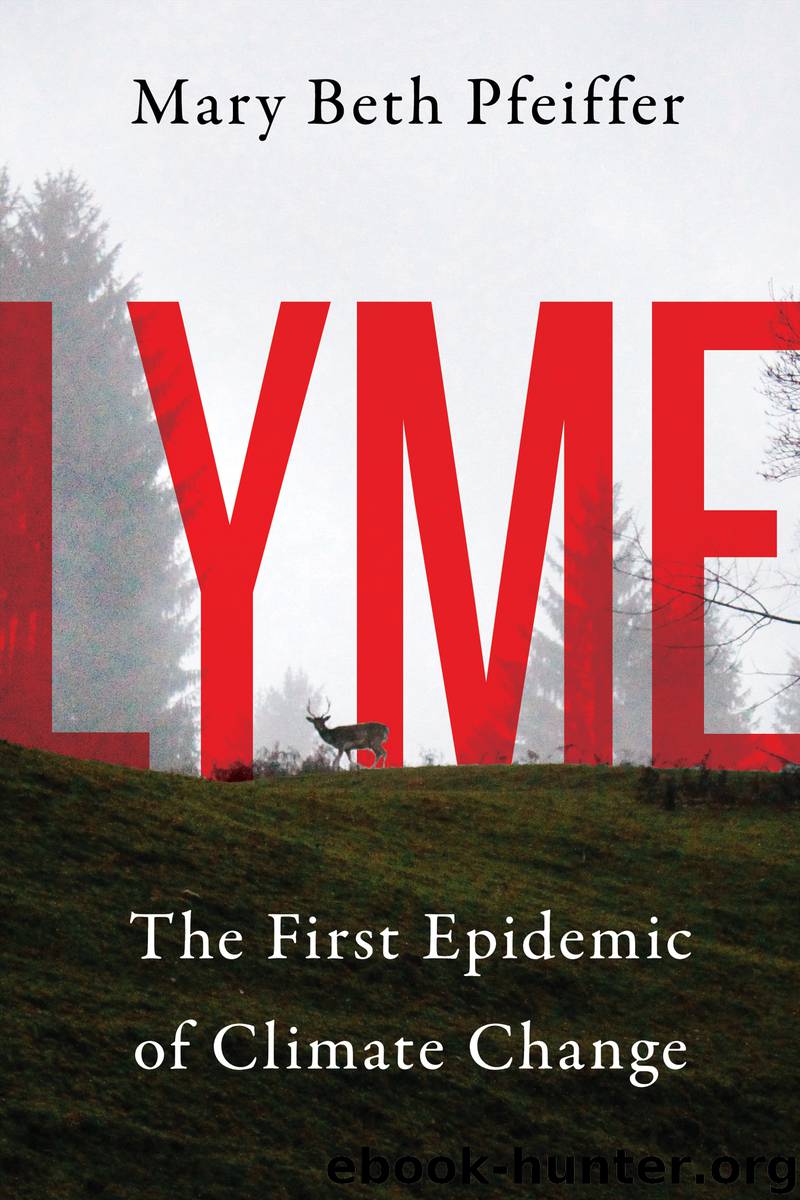Lyme by Mary Beth Pfeiffer

Author:Mary Beth Pfeiffer
Language: eng
Format: epub
Publisher: Island Press
Denying an Epidemic
It was against this backdrop that Rudenko and Clark joined forces in 2013 with a legend in the science of southern ticks named James Oliver Jr. Oliver, like Clark, had challenged prevailing wisdom on potential Lyme disease in the South, first identifying blacklegged ticks in Georgia in 1993 that had been mistaken for another species. Their project was one all too rare in the science of tick-borne disease: a study of people, their ongoing illness, and its possible cause. Together, they collected and analyzed blood and plasma samples from twenty-four patients from the South with a constellation of ongoing symptoms including “severe headache, nausea, muscle and joint pain, numbness and tingling sensations in extremities, neck pain, back pain, panic attacks, depression, dizziness, vision problems, sleep problems, and shortness of breath.” Among them, 71 percent recalled a tick bite and half had gotten a rash. All had previously been treated for suspected Lyme disease, for which they all, nonetheless, had tested negative. Clearly, this study had three strikes against it from the get go, as far as deviating from mainstream dogma. The researchers were looking for Lyme disease in a verboten area. They were studying patients who were “seronegative”—they didn’t pass standard two-tiered testing. Their subjects had posttreatment conditions that suggested chronic disease.
The team found something. In fact, it might be said they hit a small but significant bit of pay dirt. From the fluids of three patients, the team was able to culture Lyme disease spirochetes, a feat that fails about half the time even when a rash is present and infection is certain. In two Georgia residents, the scientists isolated Borrelia burgdorferi, the first time the spirochete had been cultured in residents from the South. In the third patient, from Florida, they found a strain of a rare species, Borrelia bissettii. Evidence of B. bissettii DNA had already been detected in human samples from the Czech Republic and California. This was the first time the organism itself had been cultured from a patient in North America. In all three cases, this was not spirochetal DNA, often dismissed as the dead remnants of infection. This was living bacteria.
The resulting article struck a nerve at the heart of the Lyme disease divide: “The successful cultivation [of spirochetes] from antibiotic-treated patients might suggest that active infection with persistent Borrelia may be the cause of recurrent symptoms and persistent disease,” it stated. Beyond touching on the nuclear issue of Lyme chronicity, the article included a blunt assessment of diagnostics. “This study would never happen” if the patients had been tested “according to CDC guidelines,” Rudenko’s team wrote. Rather, the patients would have been considered “inappropriate” for study because of where they lived, how they tested, and that they had previously been treated with supposedly curative doxycycline. Yet here were at least three patients, 12 percent of the group, with significant symptoms and active infection that was validated by the gold standard: live cultured organisms.
Using these findings, which were published in the
Download
This site does not store any files on its server. We only index and link to content provided by other sites. Please contact the content providers to delete copyright contents if any and email us, we'll remove relevant links or contents immediately.
| Administration & Medicine Economics | Allied Health Professions |
| Basic Sciences | Dentistry |
| History | Medical Informatics |
| Medicine | Nursing |
| Pharmacology | Psychology |
| Research | Veterinary Medicine |
Good by S. Walden(3488)
The Social Psychology of Inequality by Unknown(2940)
0041152001443424520 .pdf by Unknown(2784)
The Checklist Manifesto by Atul Gawande(2779)
The Meaning of the Library by unknow(2505)
Guns, Germs and Steel by Diamond Jared(2303)
Borders by unknow(2229)
23:27 by H. L. Roberts(2197)
And the Band Played On by Randy Shilts(2129)
Get What's Yours for Medicare: Maximize Your Coverage, Minimize Your Costs by Philip Moeller(2098)
Being Mortal: Medicine and What Matters in the End by Atul Gawande(2085)
A Leg to Stand On by Oliver Sacks(2005)
The Hot Zone by Richard Preston(1983)
The Valachi Papers by Peter Maas(1814)
The Laws of Medicine by Siddhartha Mukherjee(1755)
The Andromeda Strain by Michael Crichton(1696)
The Obesity Epidemic by Robyn Toomath(1646)
Pharmacy Practice and The Law by Richard Abood(1543)
Autism's False Prophets by Paul A. Offit(1496)
